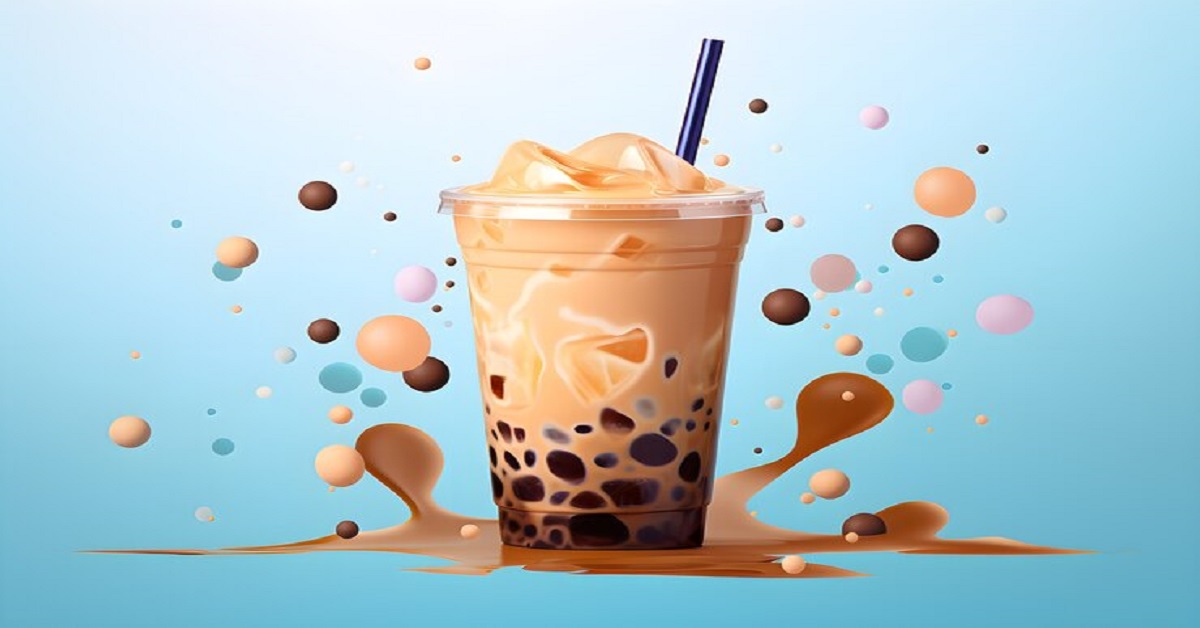Boba, also known as bubble tea or pearl milk tea, is a popular Taiwanese drink that has gained immense popularity worldwide. It typically consists of tea, milk, and sugar.
And chewy tapioca pearls (also known as boba pearls), although variations abound with different flavors and toppings. Let’s delve deeper into the components that make up this beloved beverage.
Components of Boba
- Tea: Traditionally, black or green tea forms the base of boba tea. However, modern variations may include other tea types such as oolong or fruit-infused teas.
- Milk: Milk, often in the form of condensed milk or non-dairy creamer, adds a creamy texture to the tea base. Some variations also use fresh milk or alternative milk options like almond milk or soy milk.
- Sugar: Sweetness is a key component of boba tea. Sugar syrup or sweetened condensed milk is commonly used to sweeten the drink to taste. The amount of sugar can vary widely depending on personal preference and regional variations.
- Tapioca Pearls (Boba): Tapioca pearls, also referred to as boba, are small, chewy balls made from tapioca starch. These pearls are typically black or translucent and are boiled until they achieve a soft, chewy texture. They are then added to the tea as a topping.
Preparation Process
The preparation of boba involves several steps:
- Boiling the Tapioca Pearls: Tapioca pearls are boiled in water until they become soft and chewy. They are then left to cool and may be soaked in a sugar syrup to enhance sweetness.
- Brewing the Tea: Tea leaves are brewed to make a concentrated tea base. The tea is then chilled or left at room temperature to cool.
- Mixing Tea with Milk and Sugar: Once the tea is brewed and cooled, it is mixed with milk and sugar to create the desired flavor profile and sweetness level.
- Assembling the Drink: The chilled tea mixture is poured over ice (if desired) and topped with the prepared tapioca pearls. Some variations may include additional toppings such as fruit jelly, pudding, or whipped cream.
Variations and Flavors
Boba tea comes in a wide variety of flavors and combinations:
- Fruit Flavors: Some boba teas use fruit juices or syrups to add a fruity twist to the traditional tea base.
- Matcha: Matcha green tea is a popular alternative to traditional tea bases, offering a rich, earthy flavor.
- Taro: Taro root is sometimes used to create a unique purple-colored drink with a sweet, nutty flavor.
- Milk Foam: Some modern versions of boba include a creamy milk foam topping, which adds a frothy texture and additional flavor dimension.
Popularity and Cultural Impact
Boba tea’s popularity has transcended its Taiwanese origins and has become a global phenomenon. Its appeal lies in its customizable nature, offering endless combinations of flavors, toppings, and sweetness levels to suit individual preferences.
The drink has also influenced pop culture, appearing in various social media trends and becoming a staple in many urban centers around the world.
Conclusion
In conclusion, boba tea is not just a beverage but a cultural icon that continues to evolve and captivate enthusiasts globally.
Whether enjoyed for its refreshing taste, chewy texture, or aesthetic appeal, boba tea has carved out a significant place in the hearts (and taste buds) of many. Its versatility ensures that there’s a boba tea variation for everyone, making it a delightful treat worth experiencing firsthand.
